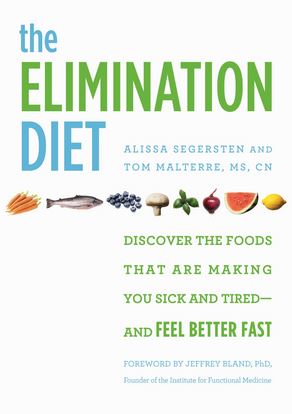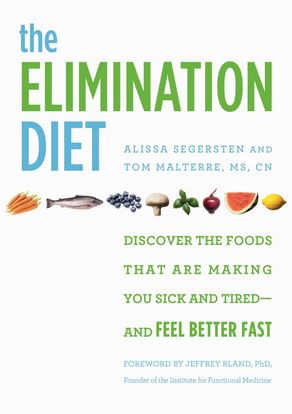Dr. C: What percentage of the population do you think could be having some of these reactions on an ongoing basis?
Tom: Well, just with the elimination diet alone, I have seen significant differences. People come in to see me, and they have an illness. They are complaining about something, and if they’re not, they do not take the time, money and energy to come see me. When somebody has an inflammatory disorder, and they come into my practice, and I put them on the elimination diet, 80 percent get better just from the diet alone. Eighty percent get better just from the diet alone! You say, “Wow, how can this be possible and why wouldn’t everybody be talking about this intervention?” That is my question out to the general populous, but I also think they are talking about it. They may not know they are talking about it, but think about it: What are a lot of the successful diet programs out there? What are a lot of the autoimmune paleo diets out there? In essence, they’re modified elimination diets. You are eliminating the most irritant foods that we know of in the United States population. They will take out the dairy. They will take out the gluten. They will take out the nightshades, nuts and other things, and it can stimulate immune cell response. Then, everyone will say, “Oh, the autoimmune paleo or paleo diet is the answer,” but maybe it’s because these people are finding out which foods do not work well in their system.
Dr. C: So, you give a list of foods to avoid in the book. Are there any particular foods you feel are best for someone to focus on?
Tom: Well, it would depend on that particular person, but in general, gluten, dairy, yeast, corn and soy are some of the top, reactive substances. If someone has joint pain, I am considering nightshades. There are certain symptoms that fit with certain foods. Alan, if you have a kid with constipation and a parent with sinus congestion, what food do you think of?
Dr. C: Dairy comes up.
Tom: You did not even hesitate. This is the thing about functional medicine practitioners – we know! You look at the literature, and you say, “Well, 40 percent of children who are consuming cow’s milk proteins will have cow’s milk enteropathy. They will upset their intestinal tract so severely that they will end up with occult intestinal bleeding. They will have blood in the stools when they consume dairy.” Why every pediatric practitioner is not looking for constipation or sinus congestion or blood in the stool with dairy does not make any sense because the literature is extremely clear. Thankfully, I got a chance to go through historical literature to do this elimination diet book. Dr. Rowe published an entire book on the elimination diet back in the early 1900’s. Then you go way back to the 1700’s, and you start seeing trends in a lot of the people who were looking at allergies and what not, and they were all doing elimination diets, but they were not saying they were limited to IGE-mediated reactions. You do not have to have the hives. You do not have to have the anaphylaxis. They were looking at gastrointestinal issues. They were looking at mood issues and food. You go way back to 790 AD and start getting into Hippocrates’ work. He was mentioning things, like “Some people find strength from dairy products while others find tremendous illness.” He saw portions of the population had food sensitivity. It’s amazing, and it has been around forever.
Dr. C: That is the thing. There is this huge schism still, and there is an allergy world that still denies all of this and argues that a lot of this is not real.
Tom: It’s so true. I find myself butting heads with the conventionally-trained practitioners. They say, “Well, I cannot believe this person put you on this diet. Sure, your laboratory analyses are all normal now for your autoimmune disease, and we are no longer going to give you the diagnosis of MS, but we’re not thinking it was actually the diet changes that did it. We’re thinking it is something else.” Kid you not, I had this one client where the neurologist said, “Let’s send you over to the Mayo Clinic.” She had severe, atypical, bipolar disorder. She had irritable bowel. She had sleep apnea. She had asthma. All these conditions were going on simultaneously, and after 12 days on the elimination diet, her chronic fatigue changed so much that no one was believing what happened. They were like, “How is this even possible?” So, at the end of six months, she had lost around 26 pounds and was coming off all meds. All the specialists were like, “Well, I do not know if I need to see you anymore.” This brain doc was like, “Oh, no. It could not be the diet. Let’s send you down to the Mayo Clinic, and let’s get a $20,000 workup.” So, he sent all her current laboratory analyses down to Mayo, and he says, “I have this client. Let’s get her checked out.” They came back and said, “We are not going to see her. She does not have any disease. We looked at her labs, and don’t see any disease.” You get to a point where you let the results speak for themselves.
We have to come to another part then, Alan. Most people who go on the elimination diet do not succeed, and here is why: They do not truly go on an elimination diet. Ninety-nine percent of the people that I do intake evaluation on, I can find hidden sources of corn, soy or gluten in their intake. It may be a pharmaceutical they are taking, a supplement they are taking or a food they are consuming that they do not understand. Maybe it’s a cross-contaminated food. Part of the reason autoimmune paleo and paleo diets are so amazing is because most people do not understand that if you are going to avoid gluten, you cannot eat most grains. You can’t. You cannot do sorghum, millet or buckwheat. Oftentimes, these – their flours – are produced in a facility that is not a dedicated, gluten-free facility, so there will be cross-contamination. Trisha Thompson, a very well-known RD, has been publishing on this stuff for over a decade about oat cross-contamination, and now with standard flours: sorghum, buckwheat, millet and others. So, you kind of say, “Oh, alright. Unintentional cross-contamination is what happens quite frequently on this elimination diet.” The data will be all over the place. They will say autism and gluten-free/casein-free diets are incredibly effective in this cohort, and in this other one, they are not effective at all. Then, you start looking at the methods, and you say, “Oh, come on! I know that the food they are consuming is cross-contaminated, but why does the person doing the study not know this?” You just observe over time. Now we know there is this whole population of refractory celiac patients, and you see those articles, and it is amazing. They say, “Well, we do not know why these people are not responding well to their gluten-free diet, but we are going to put them on a lamb, rice-based, vegetable diet for a while and see what happens.” Their symptoms go away because they were getting cross-contamination, so it is just a matter of doing it and doing it well. So, that is the biggest barrier in this situation.
Dr. C: It can be done well. If someone gets proper guidance and some proper perspectives, they can really see through those type of issues and avoid those hidden sources.
Tom: Yes, absolutely. You know how I am, Alan. I am a people guy, so I love to talk to people. I love to hang out with people. I love to call them and see how they’re doing on this program and what is going on. You know, “How can I help you?” I drove my wife nuts over the years by coming home late. I would call her and say, “I am going to be at the office a little longer,” and she would say, “Why?” I would say, “I gotta’ run.” I would take groups of my clients over to the local co-op, and I would walk them through the store and say, “Okay, this food is probably cross-contaminated,” or “You’ve got to make sure you get this.” I would do these grocery shopping tours, and then, I would coach people on all the things I would want them to have in their kitchen. “Make sure you get a high-powered blender,” etc. I could not do that in the book. I gave the kitchen essentials. I gave a lot of the information and the details, but I could not communicate it all. So, what I have done is put together an online-support program where you actually get to see me. I do webinars with you, and I talk to you about the little tips and tricks that will bring you that success you are looking for. My wife gives you these 24 cooking videos, so you can feel really comfortable in the kitchen. She is beautiful and one of the most eloquent chefs -well, she is a whole foods cook that is exponentially better than anyone I have ever seen at adapting any recipe at all to be elimination-diet friendly. So, we give you those instructional cooking videos. Then, I give these little, audio, mp3 files. I had to do this. You just open them up on a daily basis and listen. So, the week before you start your program, you hear me talking to you saying, “I bet you have little butterflies in your stomach, and these are the things you are thinking. Go sprout some broccoli sprouts right now. Let’s get your fermented vegetables started, and let’s make sure you’re taking Epsom salt baths a priority when you are feeling stressed out.” Then, on day one I say, “Alright, let’s do this. Here we go. Let’s buckle down. Let’s gets these broths going.” I talk to you the entire time. I give you these little coaching tips. I had to do it. I cannot just say “Go!” and let go. I am one of those connective, emotional people who wants to have that interaction. So, people can come on the webinars and ask me questions.
Dr. C: How do we get access to this stuff? How do we find this?
Tom: It’s on our site. So, go on our homepage, and you just log in, and we will give you some information about who we are and what we do and where the essence of disease is. Then, we will send you information about the book, about the program, and it’s incredible. Go to www.wholelifenutrition.net, and it’s super easy to get there.
Dr. C: Do you have some links for people?
Tom: Yes, absolutely. The reality is I want people to succeed. Really, Alan, the whole reason you and I are here is because we know there is a lot of unnecessary suffering out there, and we know how good life can be, and it gets lonely when you are the only person who is happy. You want people in life at that level with you. So, I want my kids to have friends that are super fun and happy. I want my friends and neighbors and people on the street — I want more people whistling, Alan. That is my goal. Do you remember 20 years ago when you could literally walk down the street and hear people whistling? My Grandpas used to whistle all the time. Do you hear that anymore? I just don’t. I want more of that. I think it’s partially because people just don’t feel good. They are not having this welling up of exuberant energy where they just express it, and that is what I think whistling is – an expression of joy.
Dr. C: Awesome, and I am so excited about this and cannot wait to share this. It is going to be totally life-changing, transformative and incredible.
Tom: That’s the plan, man. That is why we did it.
Dr. C: Thank you so much for taking the time, Tom. I know you are busy getting ready for all this. I will get this information out, and I look forward to talking again real soon.
Tom: It’s always a pleasure, Alan. Thank you so much for taking the time. We will talk again real soon, my friend.
Dr. C: Sounds good. Good-bye.











